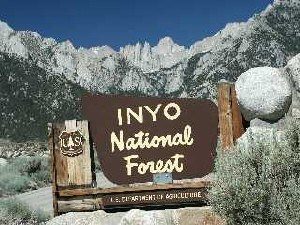There just seemed to be a lot of forest planning news …
The Rio Grande National Forest plan revision objection period ends soon (article).
Some of the major changes that will be implemented once the 60-day objection period is complete will include going from 17 management areas to nine, larger management areas. The purpose of the decrease in management areas is so that the Forest Service can manage areas in a more organized manner. The plan also altered the Southern Rockies Lynx Amendment to include the dead tree habitat. The original amendment only included green and healthy forest. This change would now include the dead and beetle kill tree habitat in the Rio Grande National Forest. The plan also includes two wildfire management areas, a smaller portion of new recommended wilderness areas near the Sangre De Cristo Mountains and tree harvesting plans that will be spread out over several years to help utilize the beetle kill in the area.
The Inyo National Forest is releasing their final revised land management plan and environmental impact statement for review and possible objections (press release).
The plan recognizes that fire is integral to forest health, while still taking proactive measures to protect communities and mitigate smoke impacts, which affects residents, visitors, and tourism. The plan also strikes a balance of treating fuels, protecting our communities from wildfire, and allowing fire to provide ecological benefits, including fuel reduction, when safe to do so.
The Sierra and Sequoia National Forests are in the last week of public comments on their second draft revised plan and EIS (announcement).
Earlier versions of these draft documents were released in 2016. We have since revised the draft documents to address changed conditions across the landscape, including extensive tree mortality, and other concerns brought up through public participation.
The Carson National Forest is taking comments on its draft plan and EIS (commentary from New Mexico Wild).
The protection and restoration of watersheds, wetlands and riparian areas will ensure that our forests continue to provide cold, clean water. It will benefit our fish and wildlife and maintain habitat connections across the landscape. This is one place where the draft forest plan falls short – protections for wetlands and riparian areas are too few and fail to fully recognize the benefits of intermittent and ephemeral waters and their intimate connection to water that flows on the surface.
The Salmon-Challis National Forest is going to prepare separate revised forest plans (article). NFMA requires a forest plan for “each unit of the National Forest System,” so there may be a reason the forest supervisor “can’t think of another forest that’s gone this route.” I think NFMA might also answer his question about “whether a full-on revision of both plans needs to occur or whether revisions can be made by amending the plans” (the former).
Mark said he has learned that some people on the Challis end of the forest feel that “they were left behind,” when the forests were combined and there was no longer a forest supervisor based in Challis. The supervisor is based in Salmon, with two district rangers based in Challis. Some people have said they feel the emphasis on the forest and its management is focused on the Salmon side because of where personnel are based.
The Custer Gallatin National Forest plan revision is implicated in a private land development (article).
While the public has little recourse to protest what happens on private land in the high Crazies, Cleveland said, the Forest Service could incorporate protections for public lands in the range into the revised Custer Gallatin Forest plan… It would be a lot less likely for them to build a road if the public sections get recommended wilderness designation.
The National Forests and Grasslands in Texas are proposing to amend their forest plan to identify areas available for oil and gas leasing (press release). This will be done in accordance with the amendments to the 2012 Planning Rule that will likely require them to address ecological integrity and species viability.
The USDA Forest Service, National Forest and Grasslands in Texas (NFGT), is beginning the preparation of an environmental impact statement (EIS) to analyze and disclose the effects of identifying NFGT lands administratively available for oil and gas leasing. The proposed action will identify lands available for leasing, leasing stipulations, and necessary amendments to the 1996 NFGT Forest Plan.

You should add that the Pike San Isabel National Forest published the DEIS for its ongoing travel management project and began the comment period last Friday: https://www.fs.usda.gov/project/?project=48214.